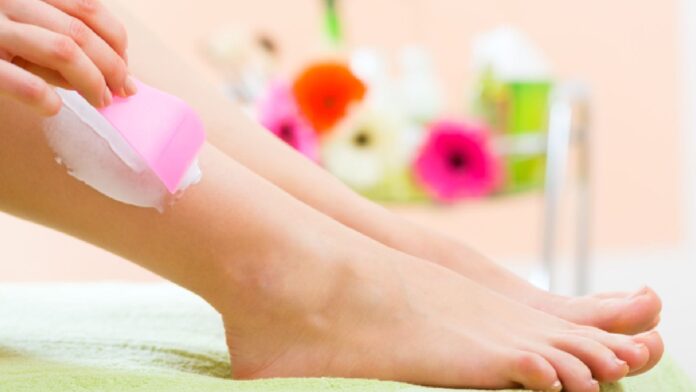Hair removal creams: Learn about their benefits, key ingredients, and tips for choosing the right product to get smooth, irritation-free skin.
Are you tired of the skin irritation that comes with waxing? Hair removal creams could be solution for you. These creams work effectively to eliminate unwanted hair, leaving your skin silky smooth without the hassle of waxing or shaving. If you have sensitive skin, you might be concerned about the safety of these products. Let’s dive into the world of hair removal creams, discussing their advantages, key ingredients, and tips on how to select the right one for your skin type.
What are hair removal creams?
Hair removal creams, also known as depilatories, are topical treatments designed to dissolve hair just below the skin’s surface. “These creams contain thioglycolic acid, which works by breaking down the protein structure of hair, allowing for easy and pain-free removal,” Dr Deepak Jakhar, MBBS, MD Dermatology, tells Health Shots.
Key benefits:
- Quick and convenient: Hair removal creams work in just minutes, allowing for a fast and effective hair removal process.
- Minimised risk of cuts: “Unlike shaving, which can lead to nicks and cuts, hair removal creams reduce the likelihood of injury”, suggests Dr Jakhar.
Are hair removal creams safe for sensitive skin?
While hair removal creams can be effective, sensitive skin can react differently to various formulations. Here are some points to consider:
- Patch testing: Always conduct a patch test on a small area of skin before using the product on larger areas. This will help you gauge your skin’s reaction, as recommended by the American Academy of Dermatology.
- Avoid harsh ingredients: Opt for hair removal creams specifically formulated for sensitive skin and free of harsh chemicals, fragrances, and alcohol.
What type of hair removal is best for sensitive skin?
Choosing the right hair removal cream depends on the ingredients it contains. Here’s a breakdown of beneficial features.
Ingredients to look for:
- Thioglycolic acid: The primary ingredient for breaking down hair proteins safely.
- Glycerin: Maintains moisture and reduces the likelihood of dryness or irritation.
- Tulsi (holy Basil): Antibacterial and promotes skin health as per the Journal of Pharmaceutical Sciences.
- Aloe vera: Helps soothe and hydrate skin.
- Glycerin: A humectant that keeps the skin moisturised.
- Neem: Known for its antiseptic properties, which help reduce inflammation as per Clinical Microbiology Reviews.
- Papaya: Contains enzymes that gently exfoliate skin while disrupting hair follicles.

What ingredients should I avoid if I have sensitive skin?
To ensure the health of sensitive skin, steer clear of hair removal creams containing:
- Parabens: Preservatives that can disrupt hormone function, as per the Journal of Xenobiotics.
- Sulphates: Harsh detergents that can dry out the skin.
- Artificial fragrances: “Potential allergens that can cause irritation”, says the dermatologist.
- Alcohol: Known for its dehydrating effects on the skin.
How to choose a hair removal cream?
Hair removal creams by skin type:
- Dry skin: Seek creams rich in moisturising ingredients like shea butter and coconut oil. Avoid alcohol-based products.
- Oily skin: Opt for creams containing salicylic acid or papaya extract to help control excess oil and prevent clogged pores.
- Sensitive skin: Look for formulations with soothing agents like aloe vera, as per Pharmacognosy Magazine. Avoid creams with harsh chemicals.
- Normal skin: You can choose from a broader range, but look for products that enhance hydration and are free of irritants.
- Combination skin: Choose balanced formulations that work gently on both oily and dry areas, such as those containing turmeric and aloe vera.
How to use hair removal cream properly?
For optimal results, follow these steps:
You may also like


- Preparation: Clean the area thoroughly to remove any oils, lotions, or makeup.
- Application: Apply a thick, even layer of cream without rubbing too hard.
- Wait time: Allow the cream to sit for 10-15 minutes, depending on product instructions.
- Testing: Before wiping off, check a small area to see if the hair comes out easily, as recommended in the Indian Journal of Plastic Surgery.
- Removal: Wipe off the cream with a damp cloth or spatula, and rinse the area with cool water.
What should you do after using hair removal cream?
- Post-care moisturization: Apply a soothing product like aloe vera gel or a moisturiser to reduce inflammation.
- Avoid hot water: “Refrain from taking hot showers immediately after use, as this can irritate the skin”, says the expert.
- Loose clothing: Wear loose-fitting garments to allow the skin to breathe and to avoid further irritation.
Hair removal creams can be a good option for removing unwanted hair without pain. If you have sensitive skin, it’s essential to select products tailored to your skin type and to test them on a small area first to prevent any adverse reactions.
Disclaimer: At Health Shots, we are committed to providing accurate, reliable, and authentic information to support your health and well-being. However, the content on this website is intended solely for informational purposes and should not be considered a substitute for professional medical advice, diagnosis, or treatment. Always consult a qualified healthcare provider for personalised advice regarding your specific medical condition or concerns.

